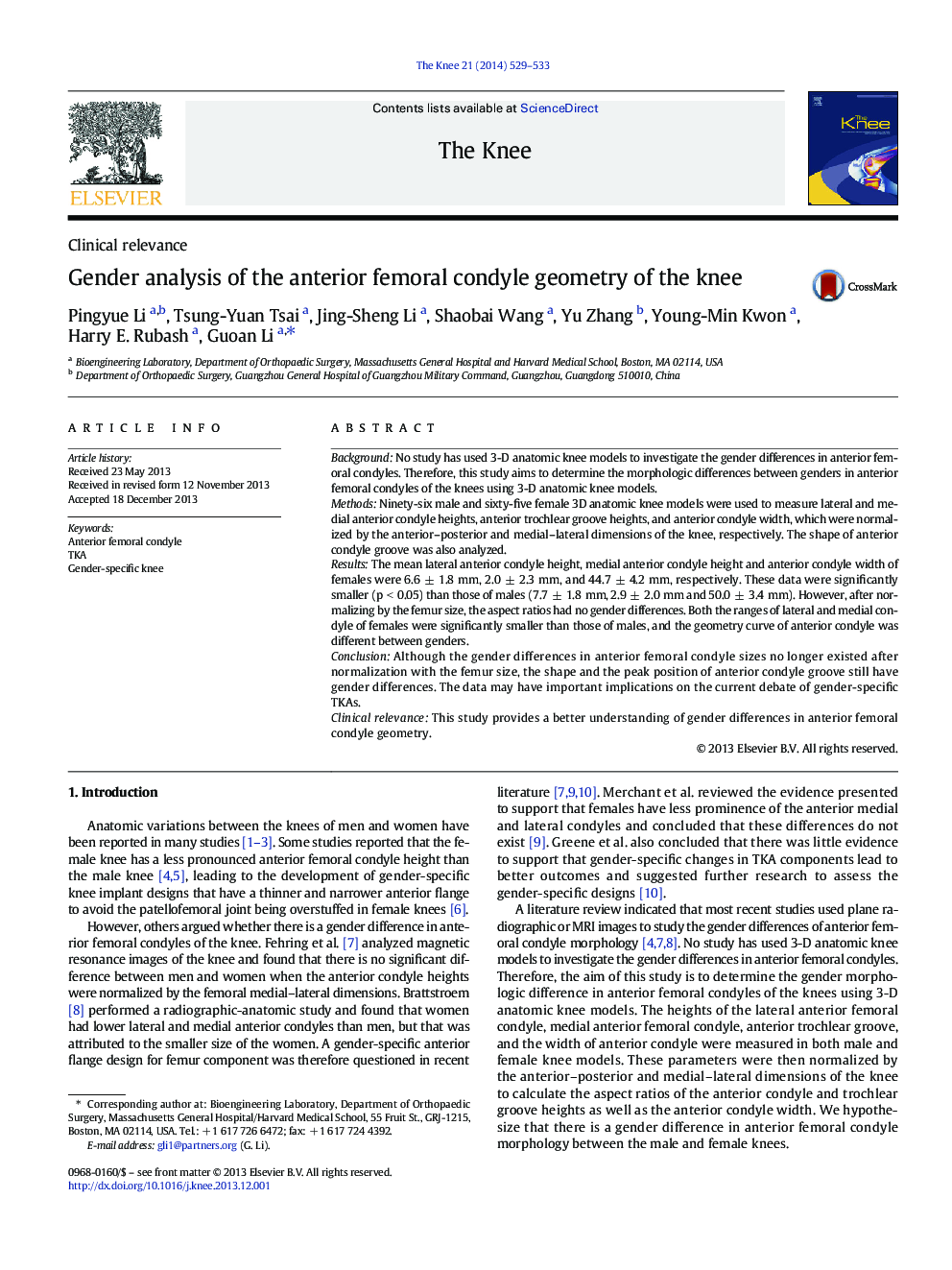| Article ID | Journal | Published Year | Pages | File Type |
|---|---|---|---|---|
| 4077522 | The Knee | 2014 | 5 Pages |
BackgroundNo study has used 3-D anatomic knee models to investigate the gender differences in anterior femoral condyles. Therefore, this study aims to determine the morphologic differences between genders in anterior femoral condyles of the knees using 3-D anatomic knee models.MethodsNinety-six male and sixty-five female 3D anatomic knee models were used to measure lateral and medial anterior condyle heights, anterior trochlear groove heights, and anterior condyle width, which were normalized by the anterior–posterior and medial–lateral dimensions of the knee, respectively. The shape of anterior condyle groove was also analyzed.ResultsThe mean lateral anterior condyle height, medial anterior condyle height and anterior condyle width of females were 6.6 ± 1.8 mm, 2.0 ± 2.3 mm, and 44.7 ± 4.2 mm, respectively. These data were significantly smaller (p < 0.05) than those of males (7.7 ± 1.8 mm, 2.9 ± 2.0 mm and 50.0 ± 3.4 mm). However, after normalizing by the femur size, the aspect ratios had no gender differences. Both the ranges of lateral and medial condyle of females were significantly smaller than those of males, and the geometry curve of anterior condyle was different between genders.ConclusionAlthough the gender differences in anterior femoral condyle sizes no longer existed after normalization with the femur size, the shape and the peak position of anterior condyle groove still have gender differences. The data may have important implications on the current debate of gender-specific TKAs.Clinical relevanceThis study provides a better understanding of gender differences in anterior femoral condyle geometry.
